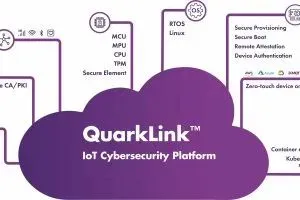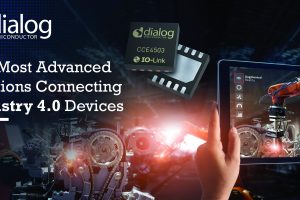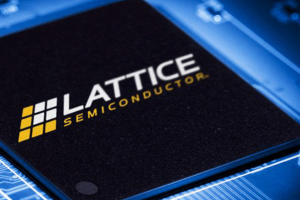 Intel’s Processor N-series computer-on-modules (COMs) were shown by Seco. Called Twin Lake, the processors have up to eight ‘efficiency’ cores and are aimed at applications dissipating 6W to 15W.
Intel’s Processor N-series computer-on-modules (COMs) were shown by Seco. Called Twin Lake, the processors have up to eight ‘efficiency’ cores and are aimed at applications dissipating 6W to 15W.
The SOM-SMARC-TWL has the Smart Mobility architecture form factor and provides connectivity options such as 2x NBase-T (2.5GbE supported), 2x USB 3.2 Gen 2, 6x USB 2.0 and 4x PCI-e Gen 3 lanes with optional SERDES.
Memory configuration includes quad channel soldered LPDDR5 with IBECC (in-band error correcting code). Operation is over -40°C to +85°C.
Aimed at the same temperature range, SOM-COMe-CT6-TWL is a similar processor board, but in the COM Express Type 6 Compact form factor.
The embedded hardware company also showed COMs based on Intel Arrow Lake Series 2 Core Ultra processors.
“These processors combine Lion Cove performance cores and Skymont efficiency cores [and] support DDR5 memory and PCIe 5.0,” says Seco. “Integrated Thunderbolt 4 and USB 4 provide connectivity, while a built-in neural processing unit reaches 13Top/s.”
The COMs are the COM Express SOM-COMe-BT6-ARL and COM-HPC SOM-COM-HPC-A-ARL.
The COM Express version has 1x NBase-T 2.5 Gbit Ethernet, 4x USB 10 Gbps, 8x hi-speed USB and up to 20x PCI-e Gen4 lanes. Two SO-DIMM slots support up to 64Gbyte of DDR5-5600 with IBECC.
In the COM-HPC variant are PCIe Gen 4/5, USB 4, 2x 2.5Gbit Ethernet, 4x USB 4.0/3.2, 4x USB 2.0, PCIe Gen 3 8×1 and PCIe Gen4 1×8 or 2×4. Optionally, a Wi-Fi 6E and Bluetooth 5.3 radio are available. Memory is two SO-DIMM slots for DDR5.
COM with comm software
Pre-installed cloud communication software is offered by Congatec. The aReady.IOT has a matching central control dashboard in addition to module-to-cloud communication software for remote monitoring, remote control and response automation.
“The aim is to simplify the use of modern embedded applications,” says the company. “The pre-configured building blocks enable communication with machines, systems, devices and sensors via protocols such as OPCUA, MQTT and REST. Users can leverage them for data acquisition, remote monitoring, remote maintenance, remote management and predictive maintenance.”
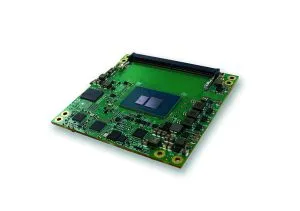
Seco presented COMs based on Intel’s Processor N-series
The option is available for the company’s SMARC, Qseven, Pico-ITX, COM Express and COM-HPC modules.
The package comes in three versions:
* ‘COM manager’ communicates the module’s hardware information and offers remote control of the module, software maintenance and the controlling dashboard.
* ‘Application manager’ additionally has remote management of carrier boards and peripheral devices, a rule engine framework to automate processes and a notification engine for automatic status distribution.
* The super-set option, ‘Fleet manager’ adds mass-deployment of software, configurations and BIOS updates.
Separately ‘Cloud connector’ is an interface to services such as AWS, Azure or Telekom Cloud.
IC for position sensors
IC-Haus has created a high-speed, sine-to-digital signal conditioning interpolation IC for magnetic or optical position sensors.
“Linear scales and angular sensors can benefit from higher resolution and accuracy, enabling an outstanding measurement precision, a faster motion speed or an improved control quality for drives,” claims the company.
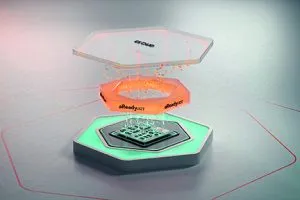
Congatec’s aReady.IOT features pre-installed cloud communication software
By combining analogue and digital processing, the IC, called iC-NQE, takes in analogue sine and cosine signals and outputs high-resolution incremental and absolute angle data in formats including simulated quadrature encoder, motor commutation signals, absolute position up to 16-bit resolution, and 32-bit cycle counting.
Host controllers can connect via SPI or I2C, and a RS-422 transceiver is included for BiSS interface cables.
Maximum resolution is 16-bit per input period. Inputs can be up to 70kHz for an A/B quadrature output with 1,024 increments, or up to 500kHz if a quadrature encoder is connected to the analogue inputs and only whole cycles need to be counted (up to 32bits). Maximum conversion rate on the sine and cosine inputs is 80Msample/s.
The programmable input amplifiers can handle differential sensor signals from 30mV to 3V.
“Primary signal errors can be compensated to a residual signal error of less than 0.1% using analogue corrections,” says the company. “In addition, the non-linearity of the sensor can also [be] corrected by digitally adjusting the transfer function in the converter if necessary – the converter circuit [is based on] vector tracking for virtually latency-free angle tracking. Optionally, a digital position filter can be enabled for noise and interference suppression.”
For motor commutation, UVW signals can be generated for motors with up to 32 pole pairs. Power is required at 3.3V or 5V and the chip comes in a 5x5mm 32pin QFN. Something similar in a 20pin TSSOP is planned.
Automotive microcontrollers
Updates in the latest version of PLS’ universal debug engine (UDE) improve the UDE for automotive processors
“UDE 2025 comes with a new home screen,” says the company. “Immediately after starting the program, users now have direct access to their most recently used debugger workspaces, sorted by time. Creating a new debugger session now also takes less time.”
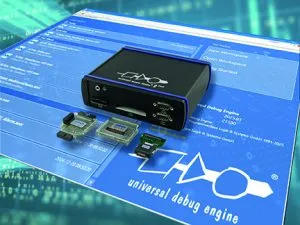
The latest version of PLS’ universal debug engine (UDE) targets automotive processors uses
Its ‘execution sequence chart’ of executed functions and system tasks has also had some work – it is now possible to search for a specific function by its name, “which is especially helpful when dealing with large amounts of data recorded by trace”, says PLS.
Time axis program flow tracing has been given keyboard shortcuts to speed up the tracking of function calls and returns.
For analysis of real-time operating system or Autosar software timing, functions have been assessed to send recorded traces and to export functions to Vector or Inchron tools for further processing.
In addition, UDE functions can now be integrated into GLIWAT’s ‘1.timing’ analysis tool.
Python has been added to JavaScript and Visual Basic as a scripting language for macro programming.
UDE 2025 now offers multi-core debugging for Tongxin Micro’s THA6 – China’s first ASIL-D certified Arm Cortex-R52 with an integrated Bosch generic timer module (GTM), says PLS.
Alongside the THA6, PLS is promoting this tool for use with Infineon’s recent TC4Dx MCUs, Renesas’ RH850/U2C, NXP’s S32K31, S32K36 and i.MX RT1180, and ST’s SR6 G6 line.
Among changes for these processors, the Bosch GTM in RH850/U2B can now be traced and “for the TC4x family, trace support has been extended to the parallel processing unit”, says PLS. “This allows the program flow of the accelerator core for AI applications based on the Synopsys ARC-EV core to be observed in parallel with the TriCore main cores.”
Percepio Detect seeks observability of embedded systems
Percepio, the Swedish maker of Tracealyzer, has released Percepio Detect, a tool to increase observability of embedded code and Edge devices during system testing, writes Alun Williams.
Optimised for use during testing of RTOS-based systems, it supports the testing and debugging of embedded code, specifically supporting continuous integration and continuous testing processes.
“While cloud-native companies like Dynatrace and Splunk focus on large-scale IT environments, we’re bringing deep observability to the edge, where real-time insights are critical,” says Andreas Lifvendahl, CEO of Percepio AB.
The tool provides monitoring and a shared dashboard with debug data access for team collaboration. It captures diagnostic snapshots complete with core dumps, call stacks and system traces. It also supports analysis of data from the system under actual execution and the occurrence of any anomalies.
 Electronics Weekly
Electronics Weekly
